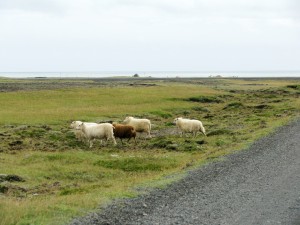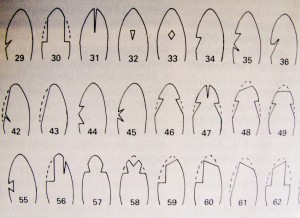S.O.S. – save our sheep! Posted by hulda on Sep 14, 2012 in Icelandic customs
 Up north the rescue units have been hard at work for the whole week. The storm may be over but it brought along a lot of snow for the north part of the country and it could not have come at a worse time.
Up north the rescue units have been hard at work for the whole week. The storm may be over but it brought along a lot of snow for the north part of the country and it could not have come at a worse time.
Icelandic sheep are let out in the spring after which they live on their own on the mountains and meadows. Come autumn the farmers will go around the areas on horseback and, with the help of dogs, drive the sheep down into réttir*. The word means both the round-up itself and the large, round corrals where the sorting happens. These have an inner and an outer circle, of which the outer is divided into segments. Each segment belongs to one farmer of the area and it is where his sheep will eventually be gathered.
First the sheep will be driven into the innermost area of the réttir. From there they are caught one by one by the farmers and what other workforce there may be – the réttir are often popular with tourists and other onlookers – and are then dragged to their owner’s segment. A typical way of doing this is by catching the sheep by its horns, throwing one leg over its back and “walking” the sheep where one wants it to go to, steering by the horns. They all have markings called eyrnamark (= ears’ mark) or fjármark (= sheep’s mark), which used to be cut in their ears. Nowadays this practice has changed into ear tags instead.
Some earmarks: each one of these belongs to a certain area farmer and could still be tracked down to them. Our history teacher once showed us an old fashioned earmark list with each mark cut out of a piece of leather with the name and the area of its owner written underneath.
However, it’s not quite yet the time for the gathering up and to quote agent Mulder, “The sheep are out there”**. This is very, very bad for them because there are now countless sheep in immediate danger. Their wool may keep them warm but their feet are not made for walking in snow and many of them have been completely buried by the storm. They’re sturdy animals and can survive for days in conditions like these but without any help they would all surely die.
Luckily the farmers aren’t alone in this. Björgunarsveitinn has gathered up a huge voluntary workforce to drive up mountains and is looking for signs of life. The sheep that are only half buried are easy enough to find, but for those that are completely under the only way to locate them is to look for holes that their body heat and breath have melted in the snow. The rescue has been somewhat successful so far if this news article is to be believed because according to it thousands of sheep have been saved already. Then again the number of sheep in need of help may at worst be 10 000-12 000. The amount of work is staggering, especially considering that the sheep have to be dug out and transported away one by one as this video shows. At the moment I’m afraid all we can do is to wish the rescuers the best of luck.
The struggle up north is still going on and it’s hard to tell yet exactly how many sheep are lost. Yet, despite the seriousness of the matter it has included some comical moments as well, for example this poor sheep that was found alive and well with its feet sticking up from the snow!
*Réttir is one of those Icelandic words that only have a plural form. However, the word rétt can mean a fold or a pen and its plural form is the same – réttir. Don’t let this confuse you too much though, rétt and réttir are not the same thing.
**I’m quite sure he had a habit of saying something like this.

Build vocabulary, practice pronunciation, and more with Transparent Language Online. Available anytime, anywhere, on any device.
About the Author: hulda
Hi, I'm Hulda, originally Finnish but now living in the suburbs of Reykjavík. I'm here to help you in any way I can if you're considering learning Icelandic. Nice to meet you!





